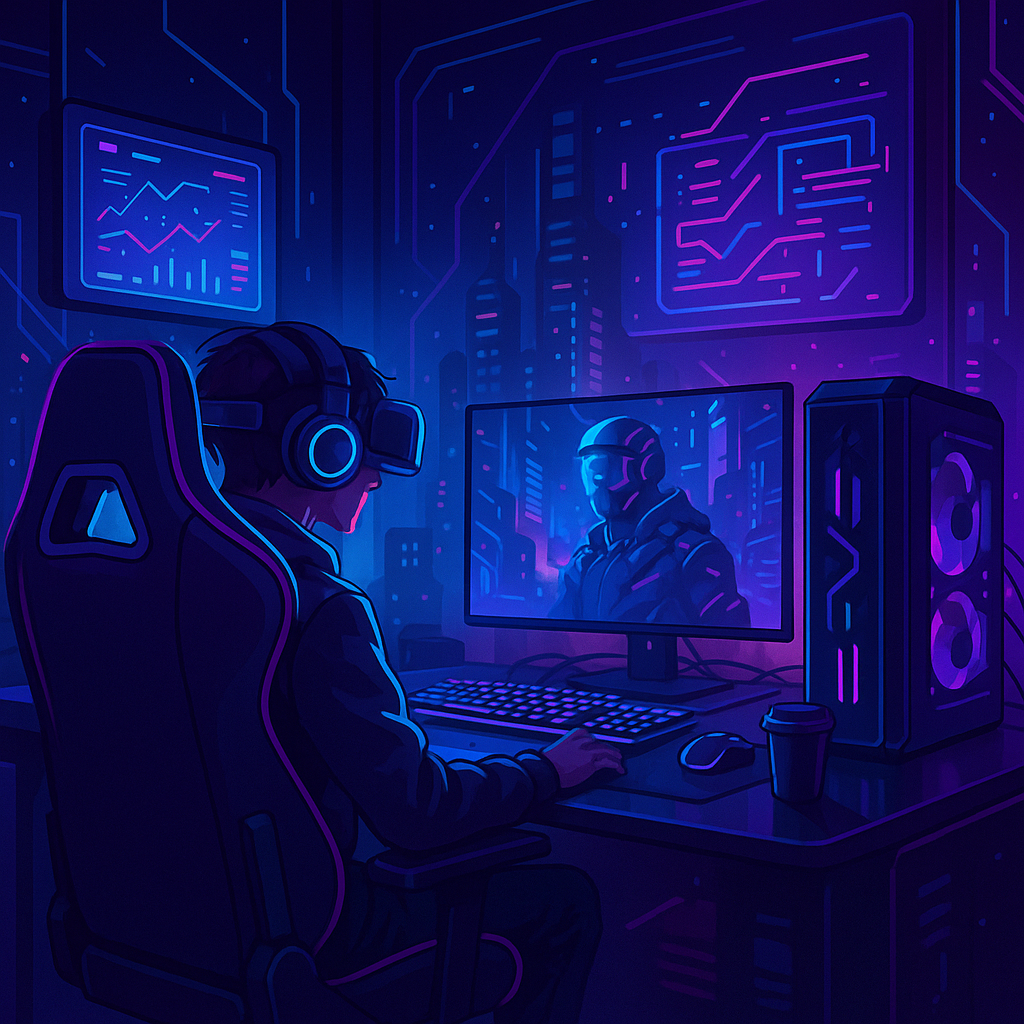
1. AI in Gaming: Smarter Worlds, Smarter Play
Artificial Intelligence is no longer just powering NPCs (non-playable characters). In 2025, AI is shaping entire game worlds that evolve in real time based on player choices. Imagine enemies that adapt to your strategy or virtual allies that learn your playstyle.
AI also powers:
Procedural storytelling, where no two playthroughs are the same.
Adaptive difficulty, making games more inclusive for beginners and pros alike.
Game development, as indie creators use AI tools to design levels, music, and even artwork.
2. Cloud Gaming Becomes Mainstream
Gone are the days of needing a $2,000 gaming PC. Cloud gaming lets players stream AAA titles on any device, from laptops to phones. Platforms like Xbox Cloud Gaming, NVIDIA GeForce NOW, and PlayStation’s cloud service have expanded libraries and reduced lag.
For Gen Z, this means:
Affordable access to high-quality games.
Cross-device play, picking up a game on your phone that you started on your console.
Eco-friendliness, as fewer physical consoles = less electronic waste.
3. VR and AR Go Next-Level
Virtual Reality (VR) and Augmented Reality (AR) are moving beyond novelty. Headsets are becoming lighter, cheaper, and more immersive. In 2025, VR is used not just for games but also concerts, fitness, and even classrooms.
Hot VR/AR trends include:
Full-body tracking for realistic avatars.
Haptic suits and gloves that let you feel textures in digital worlds.
AR overlays in sports and shopping, blending real life with virtual data.
4. Esports: From Hobby to Career
Esports is now a multi-billion-dollar industry, with Gen Z at its heart. Competitive gaming in titles like Valorant, League of Legends, and Fortnite attracts stadium-sized audiences and millions of livestream viewers.
Key 2025 esports shifts:
College esports scholarships are becoming as common as traditional sports scholarships.
Esports influencers are the new celebrities, often combining streaming, content creation, and pro play.
Hybrid tournaments mix live audiences with VR participation, letting fans “step into the arena” from home.
5. Gaming Meets Finance: The Rise of Play-to-Earn
Blockchain and crypto have sparked play-to-earn (P2E) gaming, where players earn digital assets, NFTs, or tokens they can sell. While the hype of 2021’s NFT boom has cooled, developers are focusing on utility-driven games where rewards actually matter.
This means gamers can now:
Earn real money through in-game economies.
Own unique digital items like skins or land.
Transfer assets across multiple games and platforms.
6. Sustainable Gaming Tech
Gen Z cares about the planet, and the gaming industry is adapting. Consoles and PCs are moving toward energy-efficient hardware, while studios experiment with carbon-neutral game development.
Examples include:
Consoles with recyclable materials.
Digital-first releases to reduce physical waste.
Servers powered by renewable energy for online games.
7. Community Is Everything
Gaming is no longer just about single-player campaigns. For Gen Z, it’s about community. Discord servers, Twitch streams, and in-game social hubs create digital hangouts where players connect beyond the game itself.
With inclusivity and diversity at the forefront, communities are becoming safer and more welcoming spaces for all gamers.
Final Thoughts
In 2025, the line between tech and gaming has blurred. AI is making worlds smarter, VR is making them more immersive, and cloud platforms are making them accessible to everyone. For Gen Z, gaming isn’t just entertainment—it’s culture, community, and even career.
The future of gaming is here, and it’s faster, smarter, and more inclusive than ever before.

Leave a comment
Your email address will not be published. Required fields are marked *